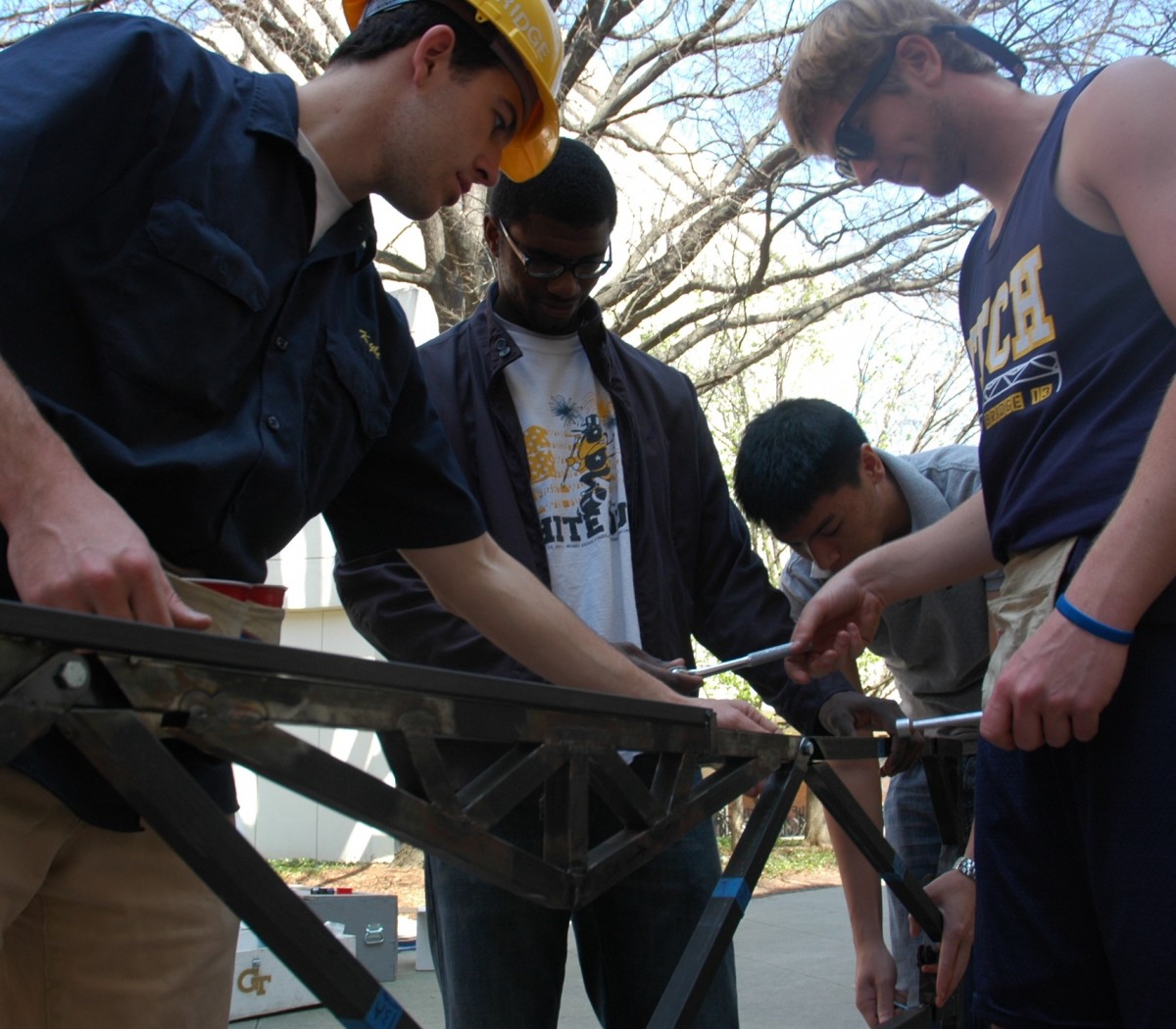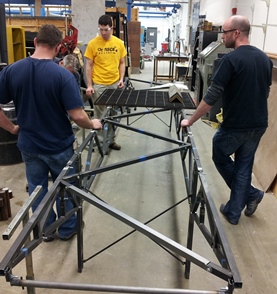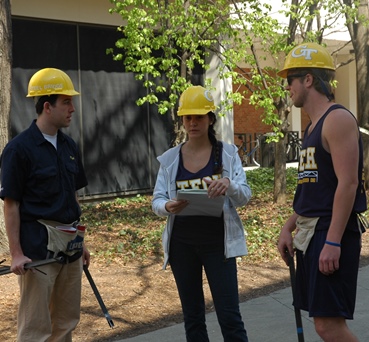It must be spring at Georgia Tech: the daffodils are in bloom, and the civil engineering students competing in the ASCE’s Steel Bridge and Concrete Canoe competitions are trash-talking each other. “Building a concrete canoe is like watching paint dry,” says a smirking Adam Karabenli, the co-captain of Georgia Tech’s 2013 Steel Bridge team.
“Building a concrete canoe is like watching paint dry,” says a smirking Adam Karabenli, the co-captain of Georgia Tech’s 2013 Steel Bridge team.
“At least we don’t spend all of our time playing with metal Tonka Toys,” says Karebenli’s roommate, Chris Kiser, the co-captain of the 2013 Concrete Canoe team.
For all of their boastful taunts, both Karebenli and Kiser will be rooting for each other April 4-6, when their teams (both representing Georgia Tech) participate in the ASCE’s 2013 Regional Steel Bridge and Concrete Canoe competitions, to be held at the University of South Carolina.
Karebenli’s co-captain, Kyle Manweiler, will be the first to tell you the Steel Bridge is anything but child’s play.
“I like to build things, sure – I’m an engineer- but this has been a lot of hard work, for me, and for the team.”
Co-sponsored by the American Society of Civil Engineers (ASCE) and the American Institute of Steel Construction (AISC), the Steel Bridge competition requires the student-led teams to show creativity in their design while meeting strict safety and construction standards – all outlined in a 40-page set of rules.
Each team is required to construct a scaled bridge model while officials from the ASCE and AISC time their work and judge their technique. Violate one of the rules and you lose points.
 “For instance, you can’t be holding a member [a section of the bridge], while you are also holding up the bridge,” said Jacob Modrich, a construction engineering major. “They’ll take points off for that.”
“For instance, you can’t be holding a member [a section of the bridge], while you are also holding up the bridge,” said Jacob Modrich, a construction engineering major. “They’ll take points off for that.”
“And you can’t rush too much because, like last year, one of the teams dropped all of it nuts and bolts into [an area designated as] ‘the river,’” said Carolina Simoes. “There wasn’t a real river there, but, on a construction site, if you drop your materials into the river, well, you lost them. They lost points for that.”
Haunted by those images, the 2013 team stepped-up its commitment to the 2013 submission, spending as much as 15 hours a week on it after they returned from winter break.
That’s a lot of time to spend on an all-volunteer project.
“The way I look at it, either I build a bridge or I waste time,” says Manweiler. “Besides, it’s fun cutting steel, welding it, and making something real. We’re structural engineers. We like that.”
Manweiler has been participating in the Steel Bridge competition since his freshman year, picking up new information, techniques, and advice each time. He has learned a lot from his classes in structural engineering, but even more from the mistakes he observed in each Steel Bridge competition. “Last year, we didn’t build in enough time to practice constructing the bridge,” he said.
“Last year, we didn’t build in enough time to practice constructing the bridge,” he said.
“We had fabrication issues, so we ended up finishing it just a few hours before we left for competition.”
Adds Karebenli, “This year, we gave ourselves two weeks to practice building it. We built it over and over. And each time, we found easier, more efficient ways to put the bridge together.”
The delays cost last year’s team more than practice time. When their steel didn’t arrive until February, they had to pay an outside company to fabricate some of the connections. The result was a bridge that was $1,000 over-budget and took about 14 minutes to construct during the actual competition.
“A good time, last year, would have been 10 minutes,” said Karebenli.
This year, the team is more confident, but far from smug.
“We did our material research earlier, we got our materials delivered earlier, and we did our own fabrication,” said Asher Tchoua. “That helped a lot. We came in under-budget.”
In the two weeks they allotted for practice, they shaved more than 50 percent off their construction time. That’s great, but they’re not convinced.
“The ASCE changed some of the rules this year. The connection points they want us to use are less stable, which makes it harder to build. It will take longer,” said Karebenli. “So we’ll do what we have to do. We’ll compensate.”
Members of the 2013 Georgia Tech Steel Bridge team are: Kyle Manweiler, Adam Karabenli, Jacob Modrich, Rob Wilson, Matt Wallace, Vu Nguyen, Carolina Simoes, Brett Reichard, Aaron Morris, Garin Hughes, Dan Cannatella, Thomas Dugan, Steven Slaughter and Asher Tchoua
